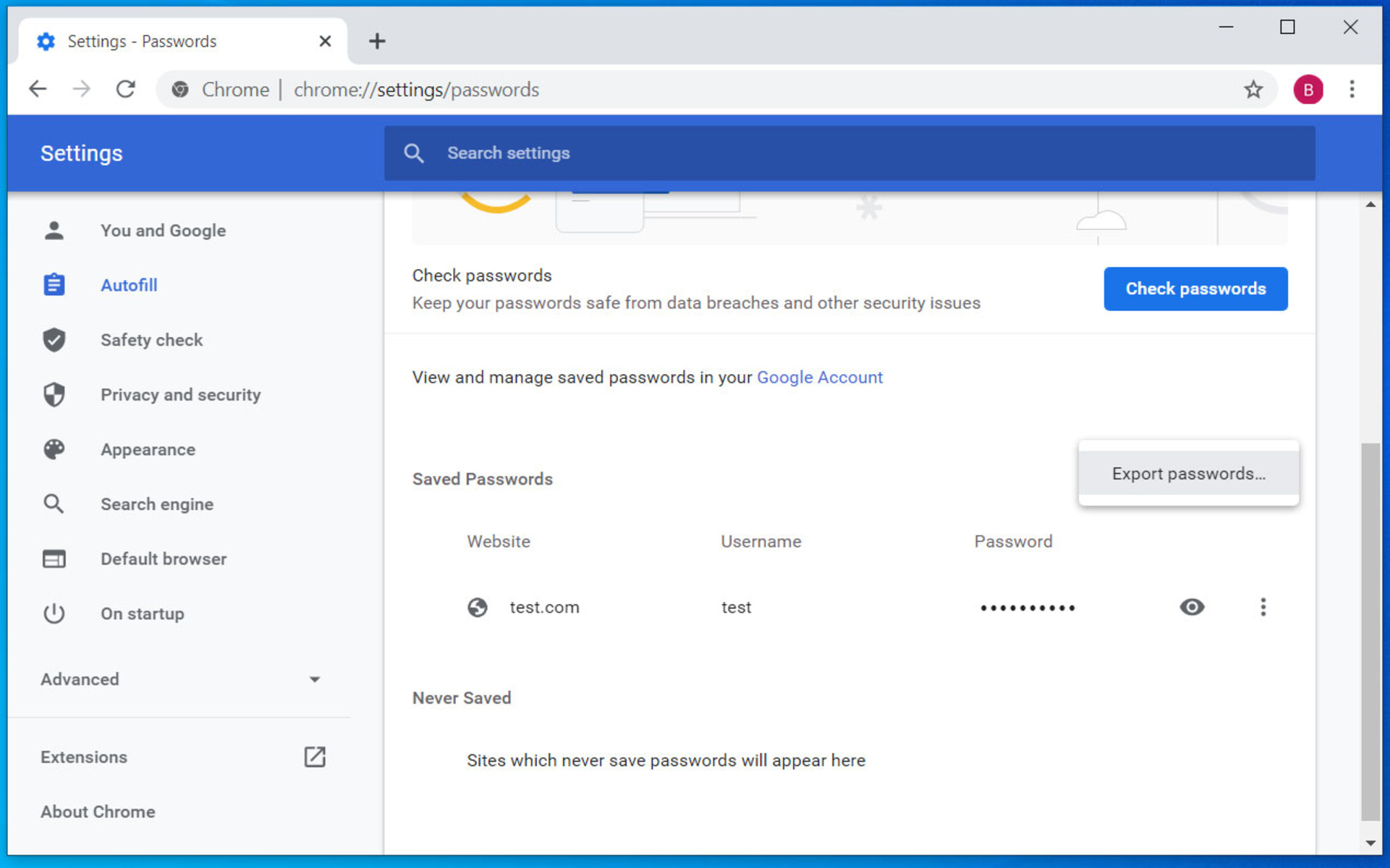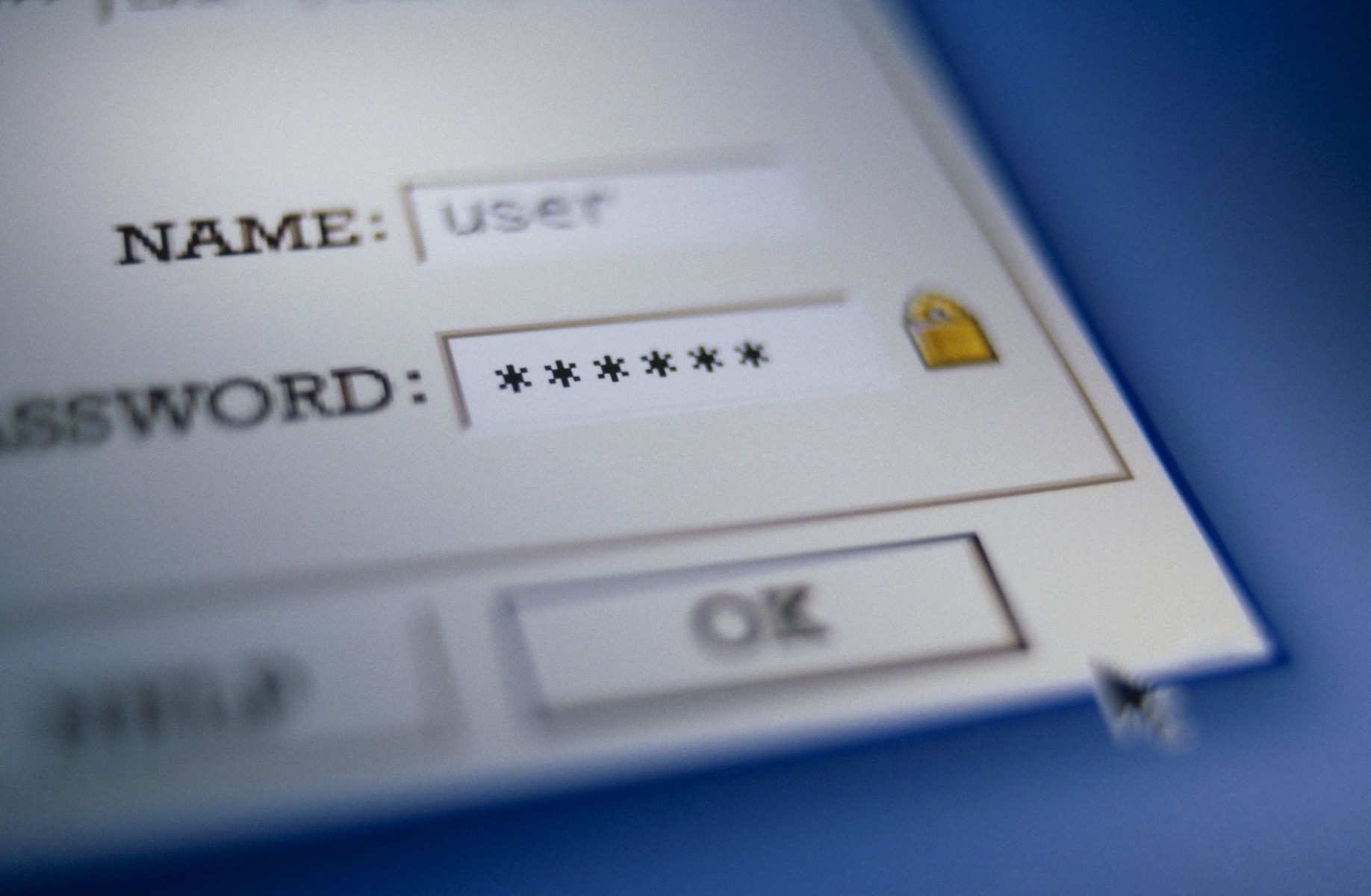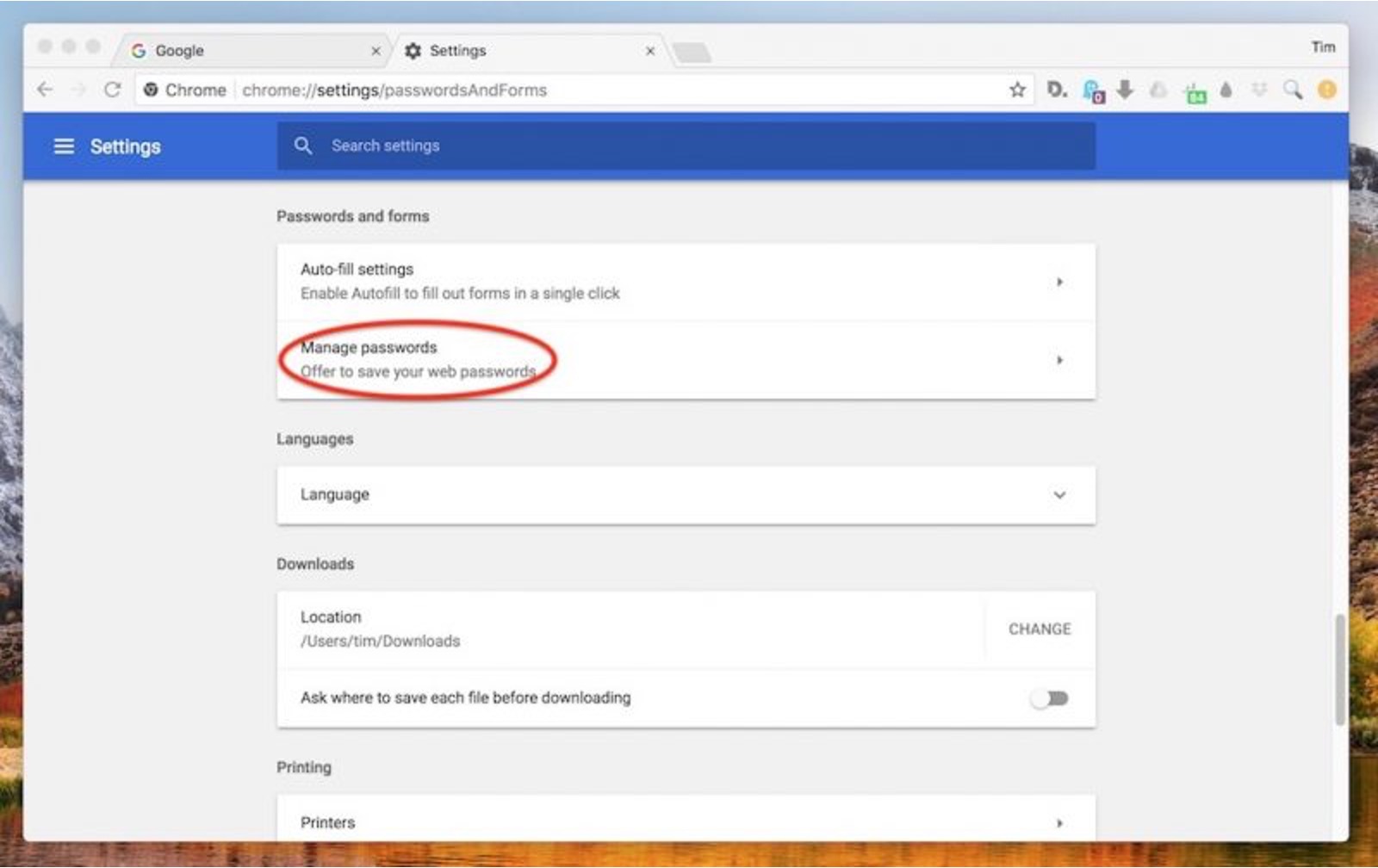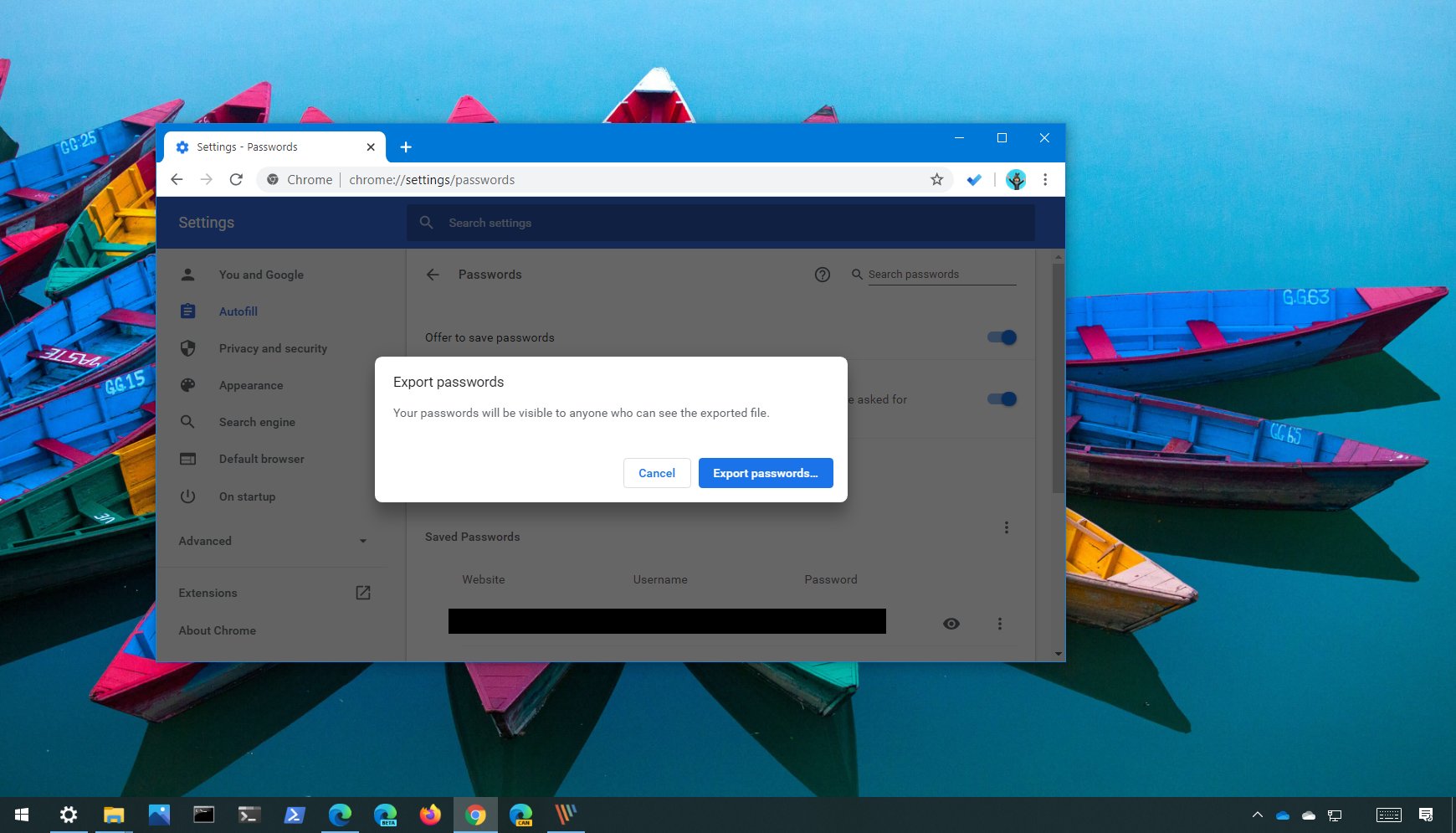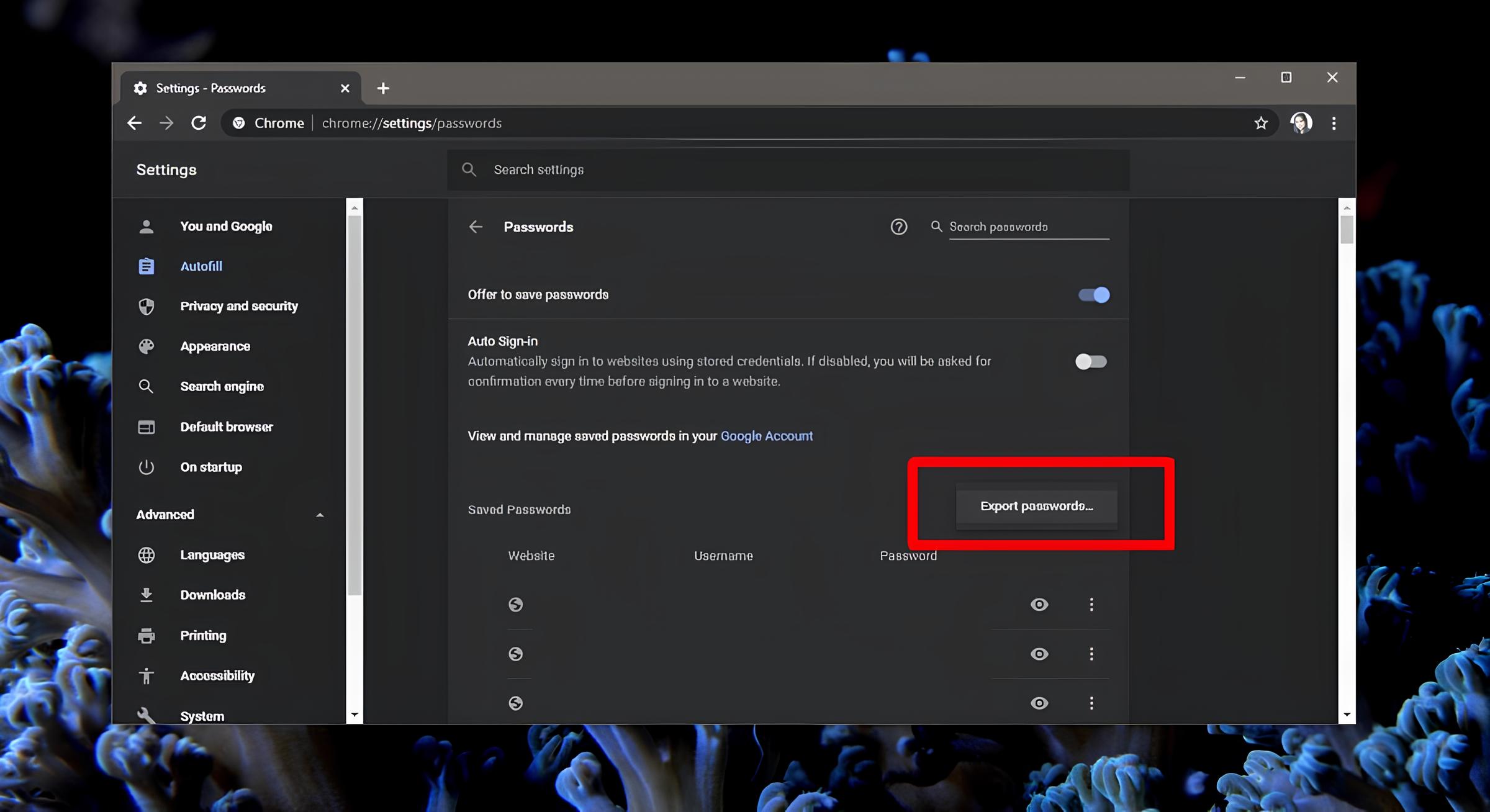Introduction
In today's digital age, the internet has become an integral part of our daily lives. From social media accounts to online banking, we rely on various platforms and websites that require passwords for access. With the sheer volume of passwords we need to remember, it's no wonder that many users turn to web browsers to store and manage their login credentials. Google Chrome, one of the most popular web browsers, offers a built-in password management feature that allows users to save and autofill their passwords across different websites.
While Chrome's password management feature provides convenience, it's essential to consider the importance of backing up these passwords. Imagine the frustration of losing access to all your accounts due to a technical issue or a forgotten password. Therefore, understanding how to backup passwords in Chrome is crucial for safeguarding your digital identity and ensuring seamless access to your online accounts.
In this article, we will explore various methods for backing up passwords in Chrome, providing you with the knowledge and tools to secure your valuable login information. Whether you prefer using Google's native solutions or third-party password managers, we will guide you through the process of safeguarding your passwords and ensuring peace of mind in the digital realm. Let's delve into the world of password backup and empower you to take control of your online security.
Using Google Account for Password Backup
Google Chrome offers a seamless and secure way to backup passwords through your Google account. By utilizing this feature, you can ensure that your login credentials are safely stored and easily accessible across different devices. Here's how you can leverage your Google account for password backup:
1. Enable Sync Feature:
To begin, ensure that the sync feature is enabled in Google Chrome. This allows your passwords, bookmarks, and browsing history to be synchronized across all your devices. To enable sync, simply sign in to your Google account within Chrome and activate the sync option in the settings menu.
2. Accessing Passwords:
Once the sync feature is enabled, you can access your saved passwords by navigating to the Chrome settings. Under the "Autofill" section, select "Passwords" to view the list of saved login credentials associated with your Google account.
3. Managing Passwords:
Google Chrome provides the option to view, edit, and delete saved passwords. This level of control ensures that you can easily manage your login credentials and make any necessary updates as needed.
4. Cross-Device Access:
One of the key advantages of using your Google account for password backup is the ability to access your saved passwords across multiple devices. Whether you're using a laptop, smartphone, or tablet, your login credentials will be readily available, streamlining the login process and enhancing convenience.
5. Enhanced Security:
Google's robust security measures safeguard your saved passwords, ensuring that they are encrypted and protected from unauthorized access. This provides peace of mind, knowing that your sensitive login information is stored securely within your Google account.
By leveraging your Google account for password backup, you can enjoy the convenience of seamless access to your login credentials while benefiting from the robust security measures implemented by Google Chrome. This method not only simplifies the management of your passwords but also ensures that your valuable login information is securely stored and readily available whenever you need it.
Using Third-Party Password Managers
In addition to Google Chrome's built-in password management feature, users have the option to utilize third-party password managers for enhanced control and security of their login credentials. These specialized tools offer a wide range of features designed to streamline password management and bolster online security. Here's a detailed exploration of the benefits and functionalities of third-party password managers:
1. Advanced Encryption:
Third-party password managers employ advanced encryption techniques to secure your login credentials. By utilizing robust encryption algorithms, these tools ensure that your passwords are protected from unauthorized access and potential security breaches. This added layer of security enhances the overall protection of your sensitive information.
2. Cross-Platform Compatibility:
Many third-party password managers are designed to work seamlessly across various platforms and devices. Whether you're using a desktop computer, smartphone, or tablet, these tools offer consistent access to your passwords, allowing for convenient and secure login management across different devices.
3. Password Generator:
A notable feature of third-party password managers is the built-in password generator. This functionality enables users to create strong, complex passwords that are less susceptible to hacking attempts. By generating unique and randomized passwords for each of your accounts, you can significantly enhance the security of your online presence.
4. Secure Password Sharing:
Some third-party password managers provide secure password sharing capabilities, allowing users to safely share login credentials with trusted individuals or team members. This feature is particularly beneficial for collaborative work environments or for sharing access to specific accounts with family members.
5. Enhanced Privacy Controls:
Third-party password managers often offer additional privacy controls, such as the ability to store secure notes, credit card information, and personal details in an encrypted format. This comprehensive approach to data security ensures that sensitive information beyond just passwords can be safeguarded within the password manager.
6. Multi-Factor Authentication Integration:
Many third-party password managers support multi-factor authentication (MFA), adding an extra layer of security to the login process. By integrating MFA with your password manager, you can further fortify the protection of your accounts and prevent unauthorized access.
By leveraging third-party password managers, users can benefit from advanced security features, cross-platform compatibility, and enhanced control over their login credentials. These tools offer a comprehensive approach to password management, empowering users to safeguard their digital identities and navigate the online landscape with confidence and peace of mind.
Exporting and Importing Passwords in Chrome
Exporting and importing passwords in Chrome can be a valuable practice, especially when transitioning to a new device or seeking to create a backup of your login credentials. Chrome provides a straightforward method for exporting and importing passwords, allowing users to manage their saved passwords efficiently. Here's a detailed exploration of the process:
Exporting Passwords:
-
Accessing Passwords Settings:
To initiate the export process, start by accessing the password settings within Google Chrome. Navigate to the Chrome settings menu and select "Passwords" under the "Autofill" section. -
Exporting Passwords:
Within the password settings, you will find an option to export saved passwords. By clicking on the "Export passwords" button, Chrome will prompt you to authenticate your identity, typically through your device's login credentials. -
Saving the Export File:
After authentication, Chrome will generate a file containing your saved passwords. You can choose the destination for saving this file, ensuring that it is stored securely and can be easily accessed when needed.
Importing Passwords:
-
Accessing Passwords Settings:
When importing passwords into Chrome, begin by accessing the password settings in the browser. This can be done by navigating to the Chrome settings menu and selecting "Passwords" under the "Autofill" section. -
Importing Passwords:
Within the password settings, look for the option to import passwords. By clicking on the "Import" button, you can select the previously exported file containing your passwords. Chrome will then prompt you to authenticate your identity before proceeding with the import process. -
Verifying Imported Passwords:
Upon successful import, Chrome will add the imported passwords to your saved credentials list. It's advisable to review the imported passwords to ensure that all login credentials have been accurately transferred.
By following these steps, users can effectively export and import their passwords in Chrome, facilitating seamless transitions between devices and creating backups of their valuable login information. This process empowers users to maintain control over their passwords and ensures that they can securely manage their login credentials across different platforms and devices.







